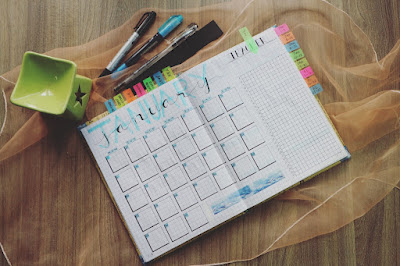ADHD and Organization: Strategies for Staying on Top of Things
Attention Deficit Hyperactivity Disorder (ADHD) affects many individuals, and one of the most challenging symptoms is difficulty with organization. Staying on top of tasks, appointments, and deadlines can feel overwhelming and can cause individuals with ADHD to feel like they are always playing catch-up.
However, there are strategies that can help those with ADHD to stay organized and manage their time effectively.
Here are some of these strategies and examples of how they can be implemented.
Create a Schedule and Stick to It
One of the most important things that individuals with ADHD can do to stay organized is to create a schedule and stick to it.
This can include both short-term and long-term goals, such as completing a project by a specific deadline or making time for exercise each day. By creating a schedule, individuals with ADHD can prioritize their time and ensure that they are dedicating enough time to each task.
For example, let's say that you have a project due in two weeks.
Rather than waiting until the last minute to start working on it, create a schedule that breaks the project down into smaller, more manageable tasks. This might include brainstorming ideas, conducting research, creating an outline, drafting the content, and revising and editing. By breaking the project down into smaller tasks and scheduling time for each one, you can avoid feeling overwhelmed and ensure that you complete the project on time.
Use Tools to Stay Organized
Another effective strategy for staying organized with ADHD is to use tools that can help you stay on track.
There are many different tools available, both digital and physical, that can be useful for managing tasks, appointments, and deadlines. Some popular tools include:
- Digital calendars: There are many digital calendars available, such as Google Calendar, Apple Calendar, and Outlook. These calendars allow you to schedule appointments, set reminders, and sync your schedule across multiple devices.
- To-do lists: To-do lists can be helpful for keeping track of tasks and ensuring that nothing falls through the cracks. You can create a to-do list using a pen and paper, a digital note-taking app, or a task management tool like Trello or Asana.
- Reminder apps: There are many different reminder apps available that can help you stay on track. Some popular options include Todoist, Any.do, and Remember the Milk. These apps allow you to set reminders for tasks and appointments, so you don't forget anything important.
For example, let's say that you have a doctor's appointment next week.
Rather than relying on your memory to remember the appointment, you can use a digital calendar or reminder app to set a reminder a few days before the appointment. This can help ensure that you don't forget about the appointment and arrive on time.
Use Visual Cues
Another effective strategy for staying organized with ADHD is to use visual cues to help you remember important tasks and deadlines. Visual cues can be anything that catches your eye and reminds you of something important. Some examples of visual cues include:
- Post-it notes: Post-it notes can be helpful for leaving reminders for yourself. You can place a post-it note on your computer, phone, or desk to remind yourself of a task or deadline.
- Color coding: Color coding can be helpful for organizing information and making it easier to remember. For example, you might use different colored folders to organize paperwork or color code your calendar to differentiate between work and personal events.
- Timers: Timers can be useful for managing time and staying on track. You can set a timer for a specific task to ensure that you are dedicating enough time to it, or use a timer to remind yourself to take breaks throughout the day.
For example, let's say that you have a meeting next week that you need to prepare for.
To ensure that you don't forget to prepare, you can place a post-it note on your computer with a reminder to prepare for the meeting. You might also use color coding to differentiate between work-related tasks and personal tasks on your calendar. Additionally, you could set a timer for 30 minutes to work on preparing for the meeting each day leading up to it.
ADHD can make staying organized and managing time challenging, but there are strategies that can help.
By creating a schedule, using tools to stay organized, and using visual cues, individuals with ADHD can stay on top of tasks, appointments, and deadlines. It's important to remember that everyone's ADHD symptoms are different, and what works for one person may not work for another.
It may take some trial and error to find the strategies that work best for you, but with persistence and determination, it is possible to stay organized and manage time effectively with ADHD.
It is important to acknowledge that ADHD can be challenging when it comes to organization and time management. However, by using these strategies and adapting them to your own unique needs and preferences, you can create a system that works for you.
With time, practice, and patience, you can learn to stay organized and on top of things, even with ADHD.
Disclaimer: The information presented in this article is for informational purposes only and should not be used as a substitute for professional evaluation, diagnosis, or treatment. Readers should consult with a healthcare professional for any concerns or questions they may have about their health or the treatment of ADHD and related problems. The author and publisher of this article do not assume any liability for any reliance on the information provided.
(The image source is https://www.pexels.com/photo/photo-of-planner-and-writing-materials-760710/ )




Comments
Post a Comment